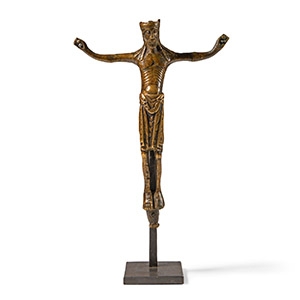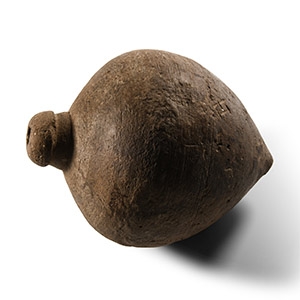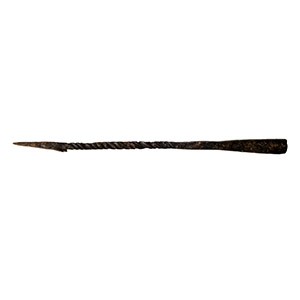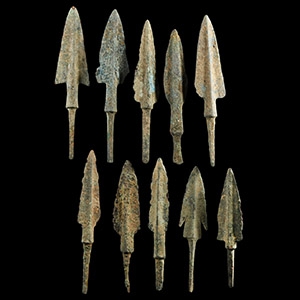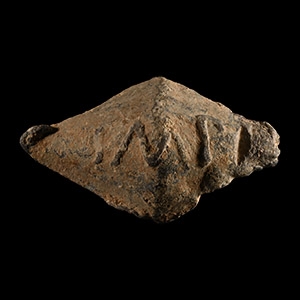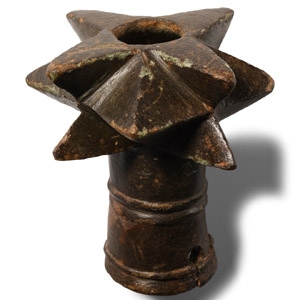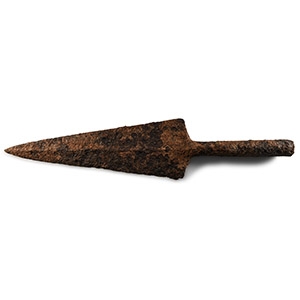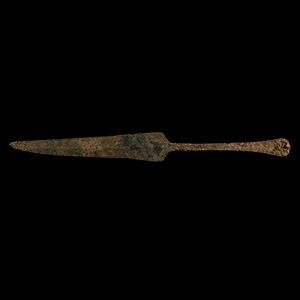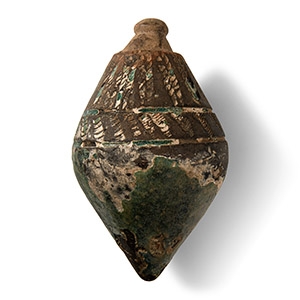Home > Auctions > 5 - 9 March 2024: Ancient Art, Antiquities,
Natural History & Coins
Auction Highlights:
From a collection acquired on the UK art market from various auction houses and collections mostly before 2000.
From an important Cambridgeshire estate; thence by descent.
Accompanied by an academic paper by military specialist Dr Raffaele D'Amato, dated 15 July 2019 and titled 'Eastern Roman Empire - Greek Fire Bomb or Hand Grenade (μεσαίον kακάβιον) 9th-11th century AD'.
Cf. Arendt, W. I., Granaten des 13-14. Jahrhunderts, die an der Wolga gefunden sind, Zeitschrift fur Historische Waffen-und Kostumkunde, 11 (1926-8), p.42; cf. Arendt, W., Die Spharisch-konischen Gefasse aus Gebranntem Ton, ibid; cf. Ayalon, D., Gunpowder and Firearms in the Mamluk Kingdom, London, 1956, p.16.
Apart from the use of siphons or manual flame-throwers called cheirosiphona, special corps of Roman soldiers employed terracotta grenades, in the form of small jars, abundantly evidenced in archaeological excavations. Such were the γανωτα, vessels (sometimes also of bronze) used for Greek fire. They were called μεσαία kακαβιά or κυτροκακάβια where the former had a bulbous shape and the latter a more cylindrical form.
Found Norfolk, UK.
From a collection acquired on the UK art market from various auction houses and collections mostly before 2000.
From an important Cambridgeshire estate; thence by descent.
Acquired 1990s.
From the collection of a late Japanese weaponry collector.
Cf. Khorasani, M.M., Arms and Armour from Iran. The Bronze Age to the End of the Qajar Period, Tübingen, 2006, items 469-471.
The arrowheads seems to belong to the subtypes A and B of the Khorasani classification. They are mainly small triangular arrowheads with rounded and barbed shoulders. Some have angular or rounded midribs. The characteristic is also the cylindrical stem and the rectangular-sectioned tang. Many similar arrowheads were found in the Marlik excavations.
From a Spanish collection.
From the collection of an London antiquarian.
Accompanied by an academic paper by military specialist Dr Raffaele D'Amato, dated 4th May 2022 and titled 'Roman Res Publica - Lead Slingshots (glandes) of Caesarian Age - 45 B.C circa'.
Accompanied by a printed copy of the Spanish cultural export licence 2022/07273.
Cf. D'Amato, R. and Sumner, G., Arms and Armour of the Imperial Roman Soldier: From Marius to Commodus, 112 BC-AD 192, London, 2009, fig.32, p.45, for a similar glandes from Zaragoza Museum, the one with the name of Pompey inscribed coming from Munda battlefield.
The shot (Völling type 1C) is marked with the abbreviated name of Gnaeus Pompey; it was used in quantity at the Battle of Monda (or Munda) against Julius Caesar, 17th March 45 BC. The projectiles were made of different materials: lead (glandes) or in pottery or stone (lapides missiles). Sometimes they were signed with the name of the general, like our specimen.
Found near Farnham Castle, Farnham, Surrey, UK.
From the private collection of a Surrey, UK, gentleman.
Cf. Gilliot, C., Weapons and Armours, Bayeux, 2008, pp.160-161, for similar maceheads.
Maces were in use since the Bronze Age. In the Medieval Western Europe, maces are attested in England as throwing weapons at the Battle of Hastings in 1066. At the end of 12th century A.D., the mace head was made of metal and was, under the influence of Byzantium, one of the weapons of the armoured knight. Originally of round section and armed with strong pyramidal spikes, the mace head evolved into a cylindrical shape, sometimes reinforced with spikes, most often with flanges.
From a collection acquired on the UK art market from various auction houses and collections mostly before 2000.
From an important Cambridgeshire estate; thence by descent.
Cf. Gorelik, M., Weapons of Ancient East, IV millennium BC-IV century BC, Saint Petersburg, 2003, in Russian, see pl.XXXIV, no.1, for identical spearhead from Kanesh (Nesa or Kultepe).
The bronze spearhead developed considerably during the period of the Assyrian colonies in Anatolia and even during the period Karum III-IV, maintaining consistently its southern shape. Conical points are also known from Bogazkoy's Karum levels. While spearheads from the first half of the 2nd millennium B.C. were hafted by means of a tang, with two slots in the blade providing additional support, most of the Late Bronze Age spearheads were socketted.
Acquired 1980-2015.
Ex Abelita family collection.
From a collection acquired on the UK art market from various auction houses and collections mostly before 2000.
From an important Cambridgeshire estate; thence by descent.
Cf. for similar Glad, D., L’armement dans la région balkanique á l’époque romaine tardive et proto-byzantine (284-641). Heritage, adaptation et innovation, Brepols, 2015, p.270 lett. Ie, for similar.
This spear was probably part of the armament of the Imperial Guards of the late Roman Empire. Similar spears are visible on the recently found reliefs of Nicomedia, in the hands of a protector divini lateris (guard of the Divine Flanks) of the Emperor Diocletian (Agturk, 2021, p.115) and other Imperial infantrymen. The same kind of spear is visible on a recently discovered sarcophagus of a protector of Diocletian, Tziampo, from the same locality.
Ex Abelita family collection, 1988.
Cf. Khorasani, M.M., Arms and Armour from Iran - The Bronze Age to the End of the Qajar Period, Tuebingen, 2006, p.380, Cat.12, inventory no.655.
Acquired 1980-2015.
Ex Abelita family collection.
Cf. Christie's, The Axel Guttmann Collection of Ancient Arms and Armour, part 1, London, 2002, item 31, p.34.
Moorey, Gordon and Khorasani created a classification of bladed weapons, according to which daggers are edged weapons not greater than 36cm in length, dirks (short swords) are between 36cm and 50cm in length, and swords are edged weapons greater than 50cm in length.
Acquired 1980-2015.
Ex Abelita family collection.
Accompanied by an academic paper by military specialist Dr Raffaele D'Amato, dated 15 July 2019 and titled 'Eastern Roman Empire - Greek Fire Bomb or Hand Grenade (μεσαίον kακάβιον) 9th-11th century AD'.
Cf. Arendt, W. I., Granaten des 13-14. Jahrhunderts, die an der Wolga gefunden sind, Zeitschrift fur Historische Waffen-und Kostumkunde, 11 (1926-8), p.42; cf. Arendt, W., Die Spharisch-konischen Gefasse aus Gebranntem Ton, ibid; cf. Ayalon, D., Gunpowder and Firearms in the Mamluk Kingdom, London, 1956, p.16; the shape finds correspondence with a fire grenade in the Kars Museum, no.14.09.2009.
Apart from the use of siphons or manual flame-throwers called cheirosiphona, special corps of Roman soldiers employed terracotta grenades, in the form of small jars, abundantly evidenced in archaeological excavations. They were called μεσαία kακαβιά or κυτροκακάβια where the former had a bulbous shape and the latter a more cylindrical form.
1153 - 1164 of 2726 LOTS

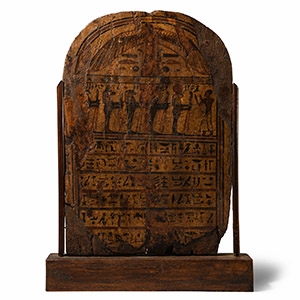
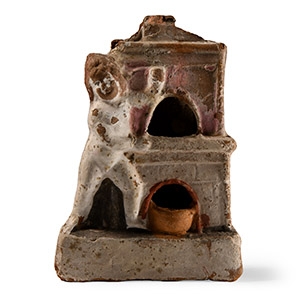

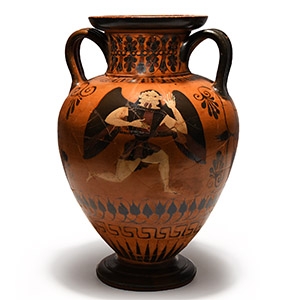
.jpg)
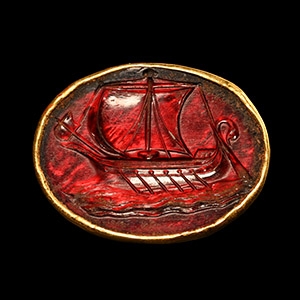
.jpg)

.jpg)
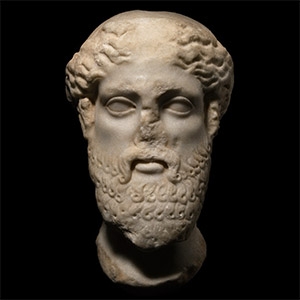
.jpg)
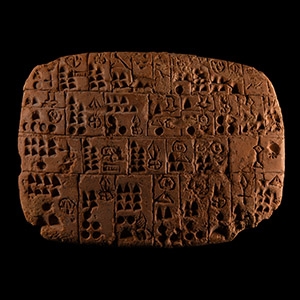

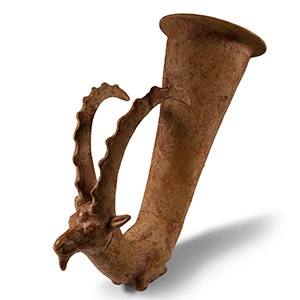
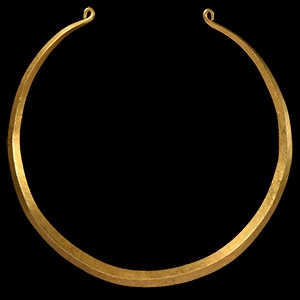
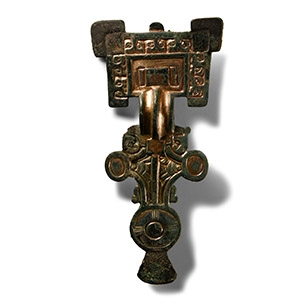
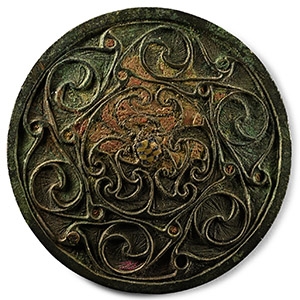

.jpg)
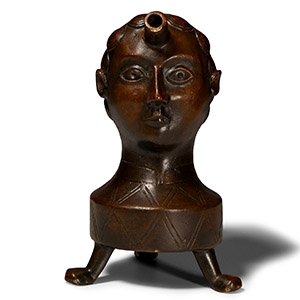
.jpg)

.jpg)
